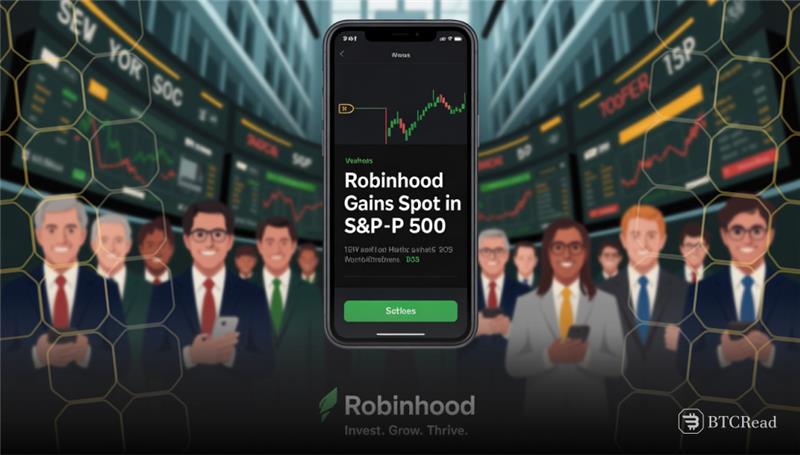S&P Dow Jones Indices announced major updates across its index families that will take effect before markets open on September 22. The quarterly rebalancing, which includes the addition of Robinhood, will change the makeup of the S&P 100, S&P 500, S&P MidCap 400, and S&P SmallCap 600.
The reshuffle aims to keep every index in its market capitalization band. Uber will join the S&P 100 and will take the place of Charter Communications, which will remain in the S&P 500. The swap is a reflection of Uber’s growth and its growing position among the biggest American companies.
The S&P 500 will also see new additions. The large-cap index will have joiners in the form of AppLovin, Robinhood Markets, and Emcor Group. Caesars Entertainment, MarketAxess Holdings, and Enphase Energy will be replaced by these. The latter three will be relocated to the S&P SmallCap 600.
Robinhood joins S&P 500 in major index update
The update is due to shifting valuations and sector exposures within the index. The S&P MidCap 400 will consist of MP Materials and Kratos Defense & Security Solutions, transferring from the small-cap index. They will drop Emcor Group and Wendy’s.
Meanwhile, the departure of Wendy’s and Emcor from the mid-cap index reflects the fluid flow of business entities from market cap categories. Other changes include the entry of Nutanix and TransUnion into the S&P MidCap 400.
Replacing ManpowerGroup and Acadia Healthcare, they will transfer into the small-cap index. The re-shuffle includes Noble Corporation, Q2 Holdings, Waystar Holding, and Hecla Mining entering the S&P SmallCap 600.
They will substitute for Owens & Minor, B&G Foods, Jack in the Box, and Simulations Plus. The replacements give a broad-based upgrade of the S&P indices. The revisions reflect current market conditions and valuations of the corporations.
Market benchmarks guide trillions in investments
Quarterly rebalancing ensures that the large-cap, mid-cap, and small-cap indexes remain accurate benchmarks for fund managers and investors. S&P Dow Jones Indices continues to be among the foremost providers of market benchmarks worldwide.
Its indices guide trillions of dollars of investments and provide key indicators for financial markets. With history that goes as far as the creation of the first index in 1884, the company is central to determining how investors follow and trade markets.
The latest reshuffle illustrates how dynamic the U.S. equity landscape is. As markets rise, fall, or shift sectors, the indexes realign to offer coverage. Investors see the changes create new potential and risk as familiar names move from one market cap sector to another.







